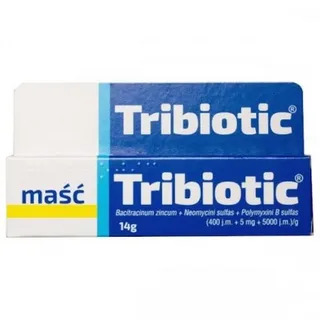Introduction
When it comes to treating skin infections, wounds, or minor irritations, choosing the right topical cream is essential. One such reliable option is Tribiotic Cream, a popular antibiotic ointment known for its effectiveness in healing a range of skin conditions. Whether you’re looking for a remedy for cuts, rashes, or infections, this cream may be just what you need. This guide will delve into its uses, benefits, and how to apply it for optimal results.
What is Tribiotic Cream?
Tribiotic Cream is a combination antibiotic topical medication used primarily for treating skin infections. It typically contains three active ingredients—neomycin, bacitracin, and polymyxin B—each playing a specific role in combatting bacterial infections. These ingredients work together to fight bacteria, prevent infection, and promote faster healing.
Key Benefits of Tribiotic Cream
1. Treats Minor Skin Infections
Tribiotic Cream is highly effective in treating minor skin infections caused by bacteria. These can include conditions like cuts, scrapes, and abrasions. The cream helps to kill the bacteria responsible for the infection and prevents it from spreading to other parts of the body.
2. Prevents Infection in Wounds
If you have an open wound, using Tribiotic Cream can help to protect it from becoming infected. By applying the cream regularly, you create a barrier that prevents harmful bacteria from entering the wound, significantly reducing the risk of complications.
3. Reduces Inflammation and Redness
One of the lesser-known benefits of Tribiotic Cream is its ability to reduce inflammation. The ingredients in the cream help to soothe irritated skin, decreasing redness, swelling, and discomfort, which can speed up the healing process.
4. Supports Faster Healing
Because it combats infection and soothes inflammation, it accelerates the healing of cuts, burns, and other skin conditions. This is especially beneficial for individuals who suffer from chronic skin problems or those who have large or deep wounds.
How to Use Tribiotic Cream Effectively
For the best results, it’s important to apply Tribiotic Cream correctly. Here are some simple steps to follow:
- Clean the Affected Area: Before applying the cream, wash the affected area with mild soap and water to remove dirt and debris.
- Apply a Thin Layer: Gently apply a small amount of Tribiotic Cream to the affected skin. Be sure to cover the entire area, but avoid using too much cream.
- Repeat as Necessary: For ongoing infection prevention, reapply the cream as directed by your healthcare provider. Typically, this is two to three times a day.
Potential Side Effects of Tribiotic Cream
Like any medication, it may cause side effects in some individuals. These are generally mild but could include:
- Skin irritation or redness at the application site.
- Allergic reactions such as itching or swelling.
- In rare cases, overuse may lead to antibiotic resistance.
If any of these symptoms occur, it’s important to discontinue use and consult your healthcare provider.
Who Should Use Tribiotic Cream?
It is suitable for anyone looking to treat minor skin infections or wounds. However, it should be used cautiously in individuals with allergies to any of the cream’s active ingredients. Pregnant or breastfeeding women should consult their doctor before use to ensure safety.
Conclusion
It is an effective, multi-purpose antibiotic ointment ideal for treating a variety of minor skin infections. Its combination of ingredients works synergistically to eliminate bacteria, reduce inflammation, and promote faster healing. Whether you’re treating a small cut, preventing infection in a wound, or alleviating skin irritation, this cream is a practical solution. Always follow your healthcare provider’s instructions for optimal results and consult them if you experience any adverse reactions.
FAQs
1. Can Tribiotic Cream be used on all types of skin infections?
It is effective for most minor bacterial skin infections, including cuts, abrasions, and burns. However, severe infections may require medical attention.
2. How often should I apply Tribiotic Cream?
Typically, it should be applied 2-3 times a day, but follow the instructions from your healthcare provider for the best results.
3. Is Tribiotic Cream safe for children?
While generally safe for children, it should be used under the guidance of a pediatrician, especially for younger children.
4. Can it cause an allergic reaction?
Yes, although rare, some people may experience an allergic reaction such as itching, redness, or swelling. If this occurs, discontinue use and consult your doctor.
5. Can I use it with other medications?
It’s always best to consult your healthcare provider before using Tribiotic Cream alongside other topical medications to avoid possible interactions.







